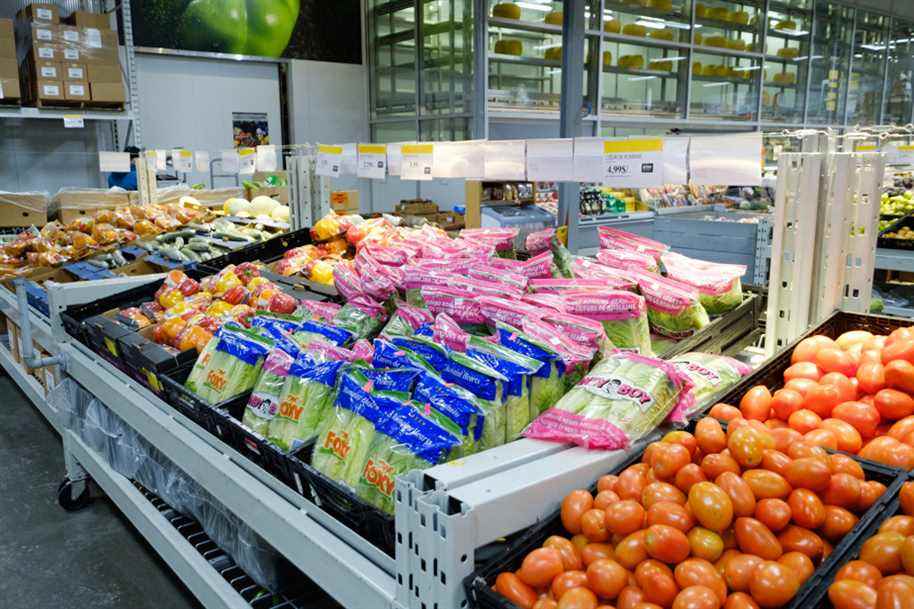Food prices are on the rise this year. And this increase leads to an upsurge in shoplifting, note several grocers interviewed. Meat, cheese and alcohol are among the products most frequently found under the coat… or in the backpack. Some retailers have calculated increases in theft of up to 20%.
Posted at 5:00 a.m.
“I really have more inventory losses at the start of the year than at the same period in previous years. It’s thousands and thousands of dollars,” says Mario Bélanger, President and CEO of the Mayrand Group, which manages four stores in Montreal, Brossard, Laval and Saint-Jérôme.
“We had to intercept people who stole meat from us, because the price of meat has increased incredibly,” he adds. It’s the most expensive thing in a grocery store. Me, I have big formats, I have filet mignons, and it can cost up to $100 a package. The price of meat is really different from that of a jar of peanut butter or a box of Cheerios. The cereal box is $3. A big package of meat for $3, there is none. »

PHOTO DAVID BOILY, LA PRESSE ARCHIVES
Mario Bélanger, President and CEO of the Mayrand Group
However, it is difficult to obtain statistics on the number of thefts since they are not always reported to the police. The Montreal Police Service identified 1,203 in food markets located on its territory in 2021.
the Annual Food Price Report 2022, published in December and produced in collaboration with several Canadian universities, also made this observation: there will undoubtedly be more shoplifting this year. “A growing phenomenon linked to growing food insecurity caused by high inflation is grocery store theft, which is expected to intensify in 2022.
Grocers are reporting an increase in shoplifting, especially of items like meat, cheese, over-the-counter drugs and energy drinks. Unreported losses due to theft could reach $3,000 to $4,000 per week in some Canadian grocery stores.
Excerpt from Annual Food Price Report 2022
This phenomenon began to grow more than six months ago, observes Annie Paquette, general manager of Pasquier food markets, whose two stores are in Saint-Jean-sur-Richelieu and Delson. “I think it’s the whole cost of living that’s going up. This means that people may not have the necessary income. With the reduced staff, it is “easier” for thieves to succeed. »
The winter season also helps evildoers. “It’s easier to camouflage with coats,” explains M.me Package. It’s even been seen in the snowsuits of the children sitting in the basket. »
“We’ve noticed that since the fall,” says Franck Hénot, co-owner of Intermarché Boyer in Montreal. “We have an increase of 20% to 25% approximately, compared to normal. »
As for the big brands, “we have no indication yet to this effect,” replied Michel Rochette, president for Quebec of the Retail Council of Canada, which notably represents brands such as Metro, IGA, Loblaw, Costco and Walmart.
Networks
Some traders believe that a large majority of thefts are the work of resale networks. “Yes, they [les voleurs] can work for networks. They are very well organized. They can also have arrangements with people internally,” says Mr. Bélanger.
“You have the casual thief and the professional thief, who are going to wreak havoc on you in the store; he’s the one who resells it,” explains Franck Hénot, who adds that he has already intercepted someone with the equivalent of $800 worth of cheese in his bag.
As for the Pasquier food markets, Annie Paquette says she deals more with people in need. “We tend to think that people are going to steal shrimp, steak. But the last time I intercepted someone, they had yogurt, ready meals, staples. It was someone who was in need, she says. It’s been a long time since I’ve dealt with networks, but yes, it’s been seen. Currently with us, it’s more the client who comes because he has needs. He has no more money to eat. »
Prevention
Preventing an individual from leaving with several packets of filet mignon or even a ton of pieces of parmesan cheese is not a simple task, it says. “Historically, in food, it was not a big problem, as in electronics or clothing”, underlines Claude A. Sarrazin, president of Sirco, an independent investigation company. “In grocery stores, it’s very rare to see someone who deals with loss prevention internally. »
” [Pour remédier au problème], there are major American grocery chains putting anti-theft tags on meat,” he says. A solution that traders here do not seem to want to consider at the moment.
And calling on security guards is quite expensive, and it’s a rare commodity, according to Mario Bélanger.
If we do business with firms, it costs us the total, between $30 and $35 an hour. And bringing someone in to catch a potential thief…it’s not automatic. When does the thief come?
Mario Bélanger, President and CEO of the Mayrand Group
Thus, the big boss of Mayrand tries instead to educate employees, to invite them to stay on the lookout.
An approach that Mr. Sarrazin also advocates. ” [Il faut avoir] a presence on the floor, having vigilant people who have an open mind. There are many who refute the shoplifting hypothesis because they just don’t want to believe it. Whereas, in fact, it is a reality, and a growing reality. »
At Pasquier, we bet on different types of barriers. “In stores, the entrance and exit are not in the same place,” explains Annie Paquette. We have barriers at each checkout. So, if a checkout is closed, a barrier prevents the customer from passing through. Sometimes, we are told that we are almost in prison at Pasquier. Yes, but it limits thieves. »

